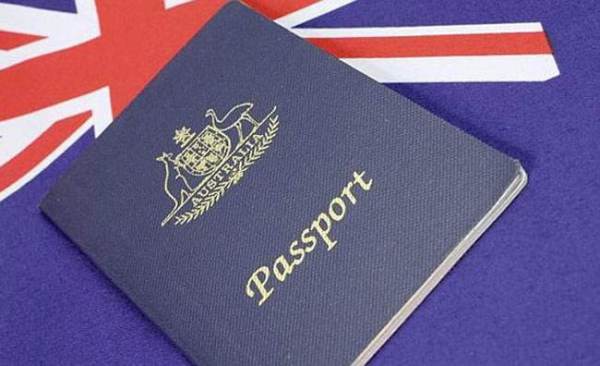Applying for a student visa is essential to study in Australia. The Australian government has adjusted the current migration policy to attract more international students and lowered the threshold for international students to study in Australia. However, applying for an Australian student visa renewal is tricky; you must understand the relevant policies and requirements.
Australia 500 Student Visa Basic Information
The 500 Student Visa is the most familiar visa for students studying in Australia. International students must apply for this visa to enrol in eligible courses in Australia, including undergraduate, master’s degree, PhD, GD courses, etc.
The 500 Student Visa is a short-term visa that allows the 500 Student Visa holder to study full-time in Australia for up to 5 years. At the same time, the 500 Student Visa holder has certain work privileges in Australia, allowing the applicant to work part-time in Australia (however, the work must start after the school year, and the maximum number of hours of work is 40 hours per fortnight); eligible family members also have the right to apply for the 500 Student Visa, which is a short-term visa. Eligible family members can also accompany the applicant.
Overall, there are two main categories of eligibility for the 500 Student Visa:
Firstly, to be admitted to a full-time educational institution in Australia;
Secondly, you need sufficient financial support during your stay in Australia.
Suitable for People
The following types of study in Australia are eligible to apply for the Australian Student Visa Category 500:
Intensive English Language Courses for Overseas Students (ELICOS);
Schools, including primary or secondary schools;
Secondary school exchange programmes;
Vocational Education and Training (VET) programmes, i.e. registered VET courses or Advanced Diplomas;
Higher education programmes – Bachelor’s or post-secondary degrees, postgraduate certificates or postgraduate diplomas, doctoral degree programmes or higher education diplomas or advanced diplomas;
Postgraduate research degrees, by postgraduate or doctoral degree;
Non-degree programmes, Foundation Studies programmes without a degree or programmes that do not lead to the award of a diploma;
Students sponsored by the Ministry of Foreign Affairs or Trade or Ministry of Defence.
Age to Apply
Under the new policy, international students in Australia must fulfil the age requirement if they are in compulsory education. To be granted an Australian student visa, students must:
Be at least six years old at the time of application
Be under 17 years of age when they start Year 9
Under 18 years of age at the commencement of Year 10
Be under 19 years of age at the commencement of Year 11
Be under 20 years of age at the start of Year 12
Children under six can apply for an Australian Visitor Visa Category 600 for up to 3 months as a student in Australia.
Validity Period
The validity of an Australian student visa varies depending on the length of the course:
If the course is longer than ten months and ends at the end of the Australian academic year (November-December), the visa is valid until 15 March of the following year.
If the course is longer than ten months (ending in January-October), the visa will usually be valid for two months longer than the course duration.
Proof of Financial Ability
If the applicant is required to provide proof of financial capability, the documentary evidence of funds can be any of the following:
Proof that the funds will cover the living expenses, tuition fees and school fees for school-age children for the 12 months that the student and accompanying family members will be in Australia;
Meeting the annual income requirement;
Provision of AASES (Acceptance Advice of Secondary Exchange Students) for secondary exchange students only;
A letter of support from the Ministry of Foreign Affairs and Trade or the Ministry of Defence.
The type of funding can be annual income, savings or loans, government loans, scholarships or bursaries.
Annual Income
The student’s financial sponsor must have an annual income of at least AUD 60,000 (approximately RMB 300,000) per year. If a family member accompanies the student, the annual income must be at least AUD 70,000 (approximately RMB 350,000).
Deposits:
From 1 July 2016, the 12-month living expenses reference is:
Student/Guardian: AUD 19,830 (approx. Rs 100,000)
Spouse: AUD 6,940 (approximately R35,000)
Child: AUD 2,970 (about Rs 15,000)
So, if you are just a student studying abroad, the certificate of deposit provides approximately (about 250,000 RMB). If you are accompanying a student, you will need (about 300,000 RMB).
Loan
We need to negotiate with the local bank. The loan amount is the same as the above conditions.
Language Requirement
If it is not a case of exemption of English language, the applicant must provide the English language scores within two years. The following are the minimum score requirements for each type of acceptable language test:
The English language requirement can be waived in the following cases:
Have completed at least five years of study in Australia, Canada, New Zealand, South Africa or Ireland
The applicant holds a British, American, Canadian, New Zealand or Irish passport
The applicant has completed a high school qualification or a subsequent course of study in English on a student visa during the first two years of the student visa application.
An applicant is enrolled in a main course of study belonging to
- The language of instruction is not English;
- Registered language programme (ELICOS);
- A registered school programme;
- A registered research postgraduate programme.
The Australian Student Visa Class 500 allows applicants to undertake a full-time course in Australia, and eligible family members may accompany them. Guardians accompanying students are not permitted to work in Australia. Spouses accompanying students are allowed to work for a limited period and may reside in Australia until the end of the course.
2024 Australian Student Visa Requirements
There are two essential points to note when applying for an Australian Student Visa:
Do not show that the applicant intends to migrate to Australia. Otherwise, the visa is likely to be refused;
You must prepare a GTE (Genuine Temporary Entrant), which describes your future study plan in Australia and indicates your intention to enter Australia temporarily and leave the country on time after completing your studies.
The Australian Government has introduced a new policy on student visas, particularly on the above two points, which are summarised below:
In the future, international students who intend to come to Australia to study can indicate their ‘intention to migrate’ when applying for a student visa. This means that the GTE (Genuine Temporary Entrant) requirement will be replaced by the Genuine Student Test (GST).
As a result of this change, students will no longer be required to hide or deny their immigration intentions. This change will make the study abroad application process more transparent and help reduce the pressure on students, allowing them to express their true intentions more freely.
However, it is worth noting that at the time of publishing this article, the Australian government has not yet announced the requirements for implementing the GST. This means that, for now, applications still need to be made under the GTE requirements. Waiting for further legislation to finalise the exact requirements will also be necessary.
Therefore, if you plan to study in Australia, keep a close eye on the policy changes. As soon as the details regarding GST are released, you must apply as per the new requirements. Following the current GTE requirements to ensure your application goes smoothly.
How Do You Apply for an Australian Student Visa (Class 500)?
Application Materials
Below is a summary of the documents for an Australian student visa:
Identity: passport and birth certificate
Study: Confirmation of Enrolment (CoE)
Health insurance: Overseas Student Health Cover (OSHC)
Financial resources: provide proof of deposit, such as bank statements
English language proficiency: IELTS, TOEFL, Pearson, Cambridge English Tests and OET Vocational English Tests are accepted.
Declaration of Temporary Residence: Make a declaration and prove that you are only applying for a visa to enter Australia for a short period to study.
Proof of employment and study: e.g., previous employment contracts, academic transcripts, and recent CV.
For applicants under 18 years of age: Parental consent form and proof of welfare arrangements (Form 157N/Accommodation Confirmation from educational institution/AASES form).
Australian Student Visa Application Process
First of all, you need to meet the admission requirements of the school, get the offer that can be paid for, and pay the fees → Receive the COE from the school → Prepare the visa documents → Submit the visa application on the website → Receive the reminder from the Visa Centre, and arrange for the medical check-up → Wait for the final result of the visa application.
The following is the specific process for an Australian student visa:
Apply for a course and get an offer letter.
According to the requirements of the offer, arrange OSHC, complete other confirmation of admission requirements (such as arranging language classes, submitting the information required by the school, etc.), and obtain a COE.
Prepare the documents required for visa application according to the checklist above. All documents should be notarized. You can contact a certified professional translation company (NATTI) for Chinese documents to prepare the translation.
Register for an Immiacount account with the Immigration Department and apply online. The visa fee is AUD 630, and there may be a credit card processing fee. (Application website: https://online.immi.gov.au/lusc/login)
Log in to your account regularly and check your contact email address. If you receive a notice from the Immigration Bureau, prepare additional documents as required.
Get your HAP number and make an appointment for a medical examination at the designated medical examination centre.
Complete the medical examination and wait for the visa to be issued.
About the Telephone Survey:
It is a step for the visa centre to verify the authenticity of the applicant’s documents. Everyone does not receive this survey. For example, if you submit the documents, the visa centre may have questions or uncertainties; he will verify your documents by phone. So, you must be very familiar with your visa documents, especially your study programme.
Instructions for Medical Examination
- The system generates the medical examination form and makes an appointment for the medical examination at the designated hospital;
- The cost of medical examination ranges from 900-1600;
- Documents for medical examination: 1. Original/copy of my passport and ID card; 2. Medical examination fee; 3. Medical examination form
- Physical examination content includes urine test, blood pressure, height, weight, vision, and chest X-ray.
Australia Student Visa Fees and Processing Time
Visa Fees
From 1 July 2023, the Australian government has increased the visa application fee: the fee for the business investment visa category has increased by up to 40%, the cost for tourist visas and some temporary work visas has increased by up to 15%, and the price for other visas has risen by 6% according to the CPI index.
Below are the fees associated with student visa applications in Australia after the price increase:

Payment Method: Online payment is the safest and fastest way to pay. Applicants can pay and submit most applications online through ImmiAccount. All online payments are in Australian dollars and may have credit card processing fees. For more information, click on How to Pay.
Application Time
The Australian 500 Student Visa takes 35-86 working days, usually 1-3 months, to obtain a visa. We strongly recommend that you submit your visa application three months before the start date of your course and do not book your flights until your visa is granted.
Note: Student visas for primary and secondary school students usually take the longest to process out of the many Visa Streams, probably due to the need to process documents that are specifically applicable to persons under 18 years of age (e.g. welfare arrangements), so it is best to submit your application as early as possible if you want your child to study in Australia.
How Do I Extend and Renew My Australian Student Visa?
Australian Subclass 500 student visas are generally valid for up to 5 years (3 years for primary students). Still, the visa’s validity period will depend on the length of your course of study and welfare arrangements (if applicable).

In the case of a master’s programme, the validity of the visa may be extended for an additional six months to allow students to wait for their dissertation to be graded.
Since Australia started cancelling passport stickers in favour of electronic visas, many students don’t remember exactly when their visa expires. Generally, the visa expiration time is at the end of August, early September, and mid-March every year, so if you are about to expire, you must renew your visa as soon as possible!
The following are the specific Australian student visa renewal regulations and procedures:
Extension Application Conditions
Australian student visa extension needs to meet certain conditions:
The current visa has not expired.
Students can prove the need to continue to study in Australia.
The student’s academic performance is good.
The student has sufficient financial resources to cover tuition fees and living expenses.
The student has appropriate health insurance.
Students who fulfil the above criteria may consider applying for an extension of their Australian student visa.
Required Documents
The documents required to apply for an extension of an Australian student visa mainly include the following:
Completed application form.
Copy of current passport and visa documents.
Recent academic transcripts.
A letter from the school certifying the continuation of study.
Proof of recent tuition fees and living expenses.
Appropriate health insurance documentation.
Students should ensure the accuracy and completeness of all documents when preparing their materials.
Application Process
Applying for an extension of your Australian student visa can be done through the Australian Immigration Department’s online application system. The following are the specific steps:
Create ImmiAccount
Before applying for a visa extension, applicants must create an individual user account (ImmiAccount) on the Australian Immigration website to log in and manage the visa application.
Complete and Submit the Application Form
After logging into ImmiAccount, applicants are required to complete and submit the visa extension application form. During the process of completing the form, applicants are required to provide personal information and relevant documents as requested.
Payment of Application Fee
After submitting the application form, applicants must pay the appropriate application fee. The fee amount may vary depending on the length of the visa extension and individual circumstances.
Apply and Wait for the Result
Once the application form and fee have been submitted, the applicant will need to wait for the outcome of the application from the Australian Immigration Department. Usually, the applicant will be notified of the result of the application within a few weeks. During the waiting period, applicants can log on to ImmiAccount to check the progress of their application at any time.
The application process usually takes time; students should plan and apply on time.
Visa Renewal Fees
According to the current Australian Immigration Visa Fees, the application fee for the first renewal in Australia is AUD 650 (student) / AUD 485 (accompanying spouse) / AUD 160 (accompanying minor child); for the second renewal in Australia, there will be an additional Subsequent temporary application charge of AUD 700 per person. A surcharge of A$700 per person will be added from the second in-country renewal. In addition, there will be an additional 1-2% credit card processing fee for payment by credit card.
Transferring an Australian Student Visa
In some cases, applicants may need to transfer their student visa to another type, such as a work visa or skilled migration visa. The process is relatively complicated and requires prior knowledge of the relevant policies and requirements.
Firstly, the applicant must determine whether he or she is eligible for a visa transfer, for example, whether he or she meets the criteria for a skilled migration visa.
Secondly, applicants must apply for a visa transfer before the visa expiry date and prepare relevant documents, such as work contracts or skills assessment reports.
Finally, the applicant needs to submit the relevant documents as soon as possible after the transfer application is approved and fulfil the relevant obligations according to the requirements of the new visa.
Note
In the process of applying for the extension of an Australian student visa, there are some precautions and common problems that need to be grasped and understood.
Time to submit an extension application: According to Australian immigration regulations, the best time to apply is 28 days before the visa expires. You can avoid extra costs and hassle by submitting your application as early as possible.
Importance of a letter of representation: A letter of representation is one of the most essential documents in an application for an extension of a visa and should clearly and unambiguously convey the applicant’s circumstances and reasons. A well-written letter of representation will increase the chances of success.
Keep contact details up to date: During the application process, applicants must provide accurate and valid contact details to ensure that the Australian immigration authorities can contact the applicant promptly.
Seek help and counselling: If there is a problem during the application process, applicants can always seek help and counselling from the school or the Australian immigration authorities. They will provide applicants with accurate information and guidance.
Maintain good academic performance and financial ability to facilitate visa extension approval better.
Keep abreast of visa policy, regulation updates, and changes to make sound decisions.
FAQs
Under what circumstances can I not apply for a student visa while I am in the country?
There are a range of circumstances under which an applicant cannot lodge a student visa application in Australia, such as if the applicant holds a sponsored family visitor visa. Our lawyers will carefully assess your current visa situation and give you advice.
Can I continue to apply for a student visa without a Confirmation of Enrolment (‘COE’)?
Yes, you can. You can use a Letter of Offer instead of COE. Suppose you want to complete your master’s thesis in China. In that case, you can provide a letter from the university proving that the university requires the student to complete the thesis in China.
Do I need proof of funds to apply for an Australian Student Visa?
All applicants must declare on the visa application form that they have sufficient funds to live and study in Australia. However, not all applicants, such as bank deposits, must provide proof of funds.
In addition, the law requires that the applicant has genuine access to sufficient funds and does not require ownership of the funds, so proof of funds can be in the form of annual income or a loan. Furthermore, the law does not specify whose account the funds must be in but only requires the applicant to assess whether he or she can access sufficient funds.
What should you do if you cannot obtain a new COE on time for visa renewal?
When applying for renewal of an Australian student visa, applicants may be unable to obtain a new COE (Confirmation of Enrollment) on time, resulting in the inability to submit a renewal application. The solution to this problem is to contact the school as soon as possible to find out the progress of the COE and prepare other required documents as far in advance as possible. Additionally, applicants may experience insufficient funds to meet visa requirements. Applicants may seek financial support from family members or close friends and provide relevant financial proof.
If I am a student for over five years, what should I do with my visa?
If you have not finished your studies and your visa is about to expire, you can apply to the Australian Immigration Department for another student visa until the end of your course; if you have finished your studies but have not yet participated in the graduation ceremony and your visa is about to expire, you can apply for a tourist visa to come back to Australia again to participate in the graduation ceremony.
Does the fact that my course of study is migratory affect my application for a student visa?
No, it will not. First of all, the migrant profession does not mean migrant tendency. If you have the idea of staying in Australia after graduation, it is perfectly fine; secondly, in the GTE, you should indicate that your primary purpose during the student visa period is to study the profession-related content, not illegal work or other non-visa permitted content.
What should I do if my Australian student visa has been cancelled?
If you are outside Australia, your visa will be cancelled without any chance of appeal. However, if you are in Australia, the Department of Immigration will not cancel your visa directly. They will first send you a notice of intention to cancel your visa and give you 28 days to respond.








